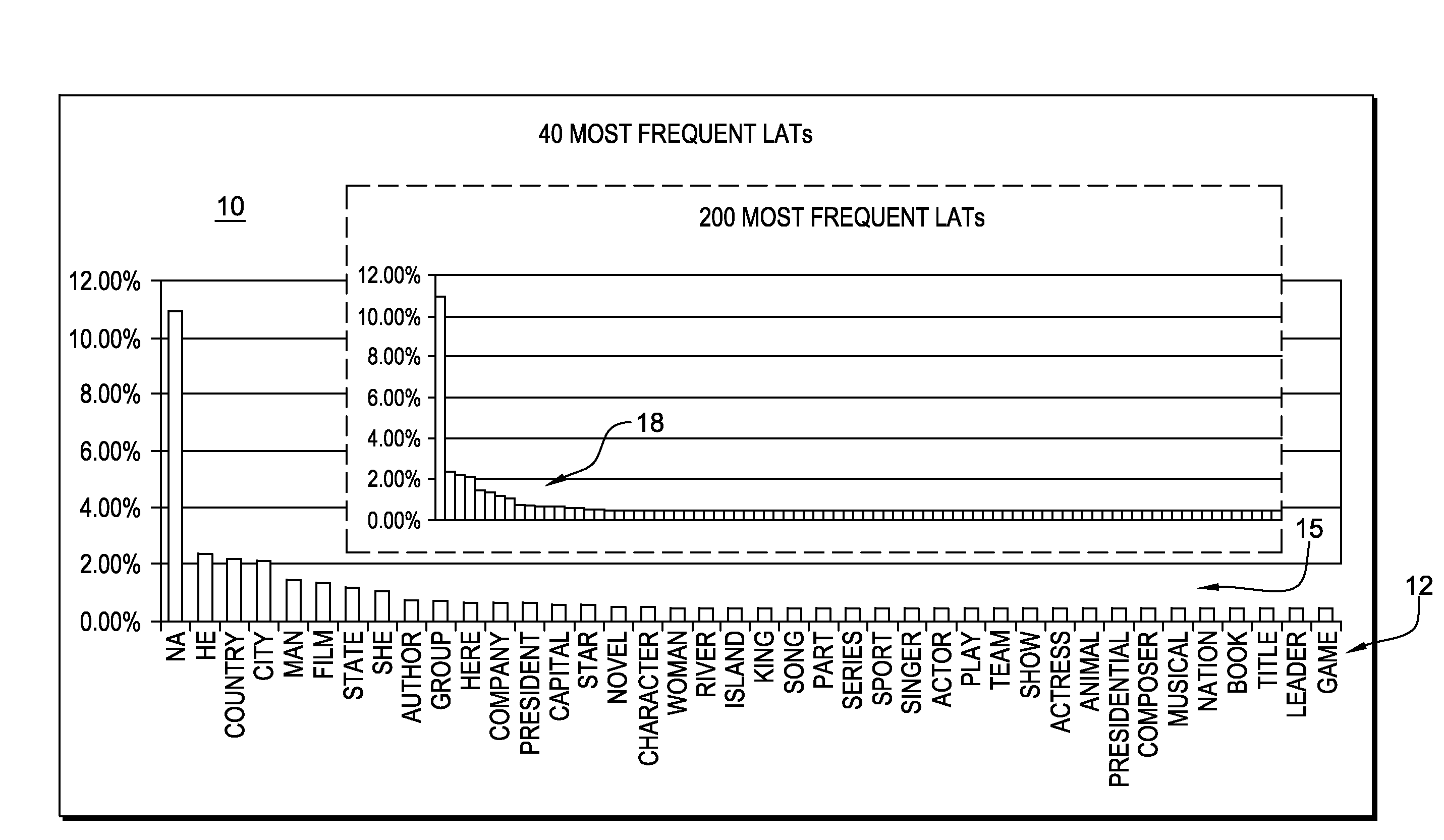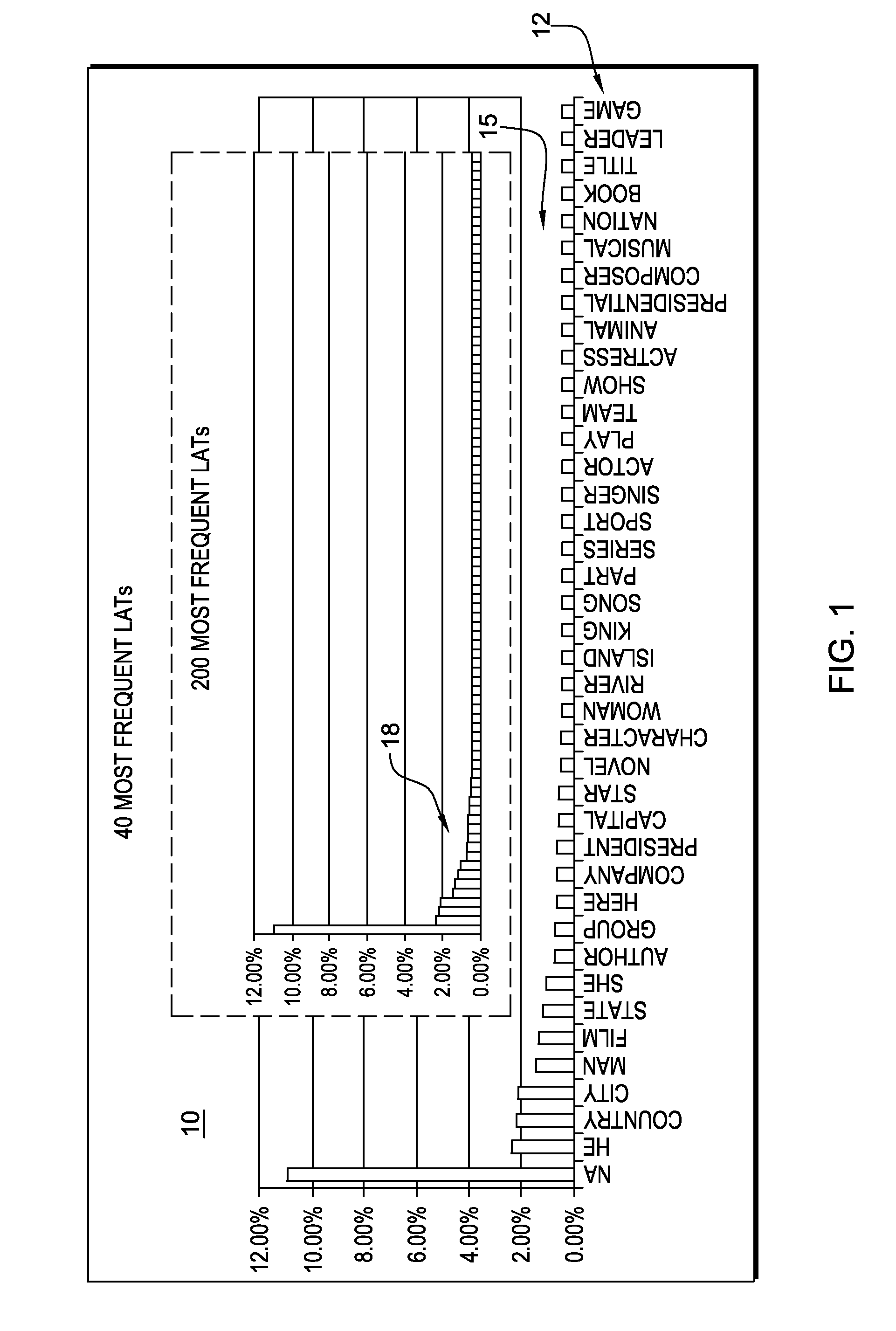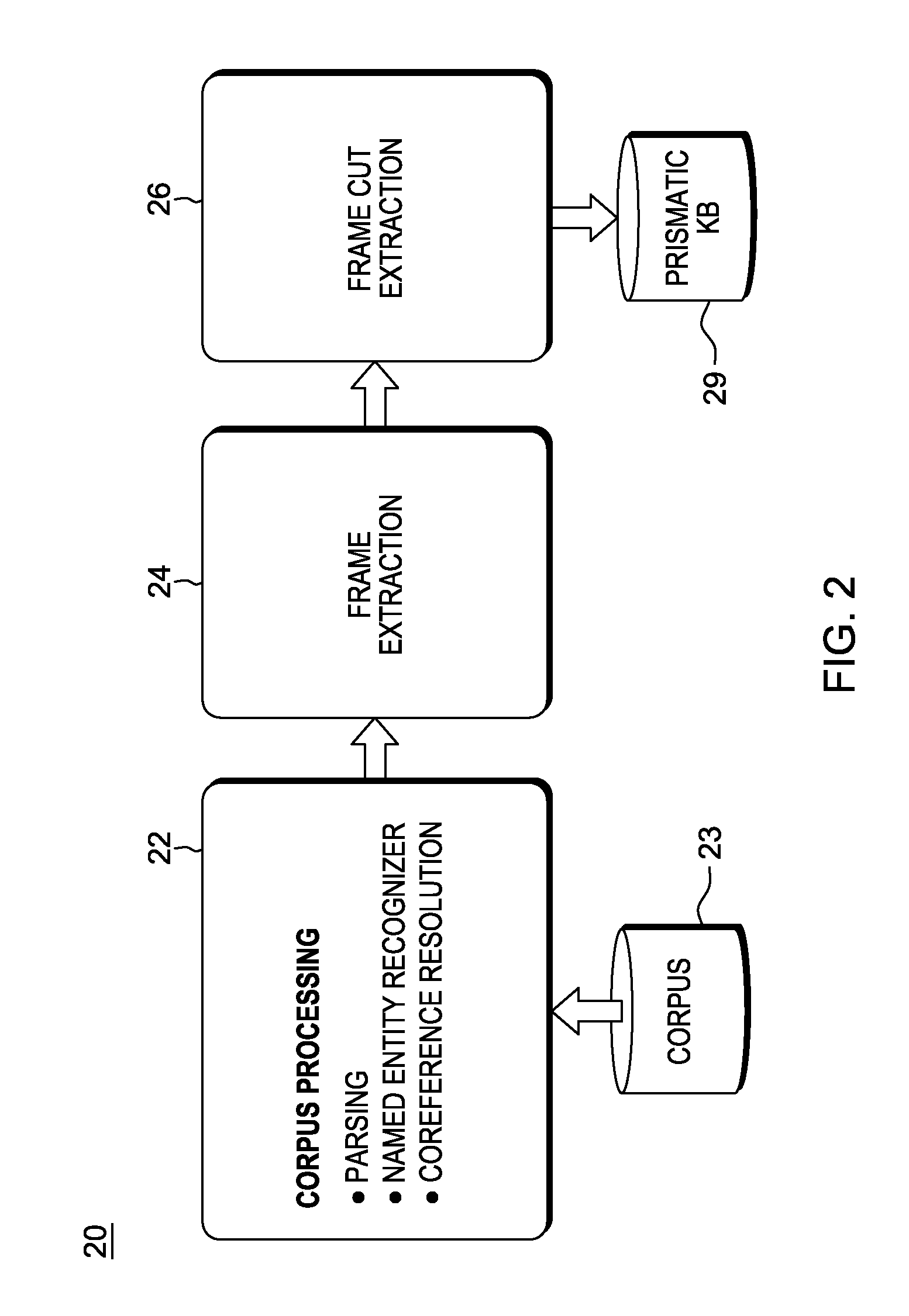Predicting lexical answer types in open domain question and answering (QA) systems
- Summary
- Abstract
- Description
- Claims
- Application Information
AI Technical Summary
Benefits of technology
Problems solved by technology
Method used
Image
Examples
Embodiment Construction
[0025]As referred to herein, a lexical answer type, or “LAT”, is a word in or a word inferred from the clue (e.g., question) that indicates the type of the answer, independent of assigning semantics to that word. For example, in the clue “ . . . Invented in the 1500s to speed up the game, this maneuver involves two pieces of the same color . . . ”, the LAT is the string “maneuver”. Determining whether or not a candidate answer can be considered an instance of the LAT is an important kind of scoring and a common source of critical errors. In an embodiment of the present invention, this capability is implemented by a component called TyCor (short for Type Coersion) scoring, whose goal is to estimate the extent to which an entity can be coerced into (or matched with) a specific LAT. Functionally, TyCor scoring takes as input any two English terms (the first representing the LAT, the second being the answer candidate) and returns a numeric value.
[0026]In a QA system, such as described b...
PUM
 Login to View More
Login to View More Abstract
Description
Claims
Application Information
 Login to View More
Login to View More - R&D
- Intellectual Property
- Life Sciences
- Materials
- Tech Scout
- Unparalleled Data Quality
- Higher Quality Content
- 60% Fewer Hallucinations
Browse by: Latest US Patents, China's latest patents, Technical Efficacy Thesaurus, Application Domain, Technology Topic, Popular Technical Reports.
© 2025 PatSnap. All rights reserved.Legal|Privacy policy|Modern Slavery Act Transparency Statement|Sitemap|About US| Contact US: help@patsnap.com



